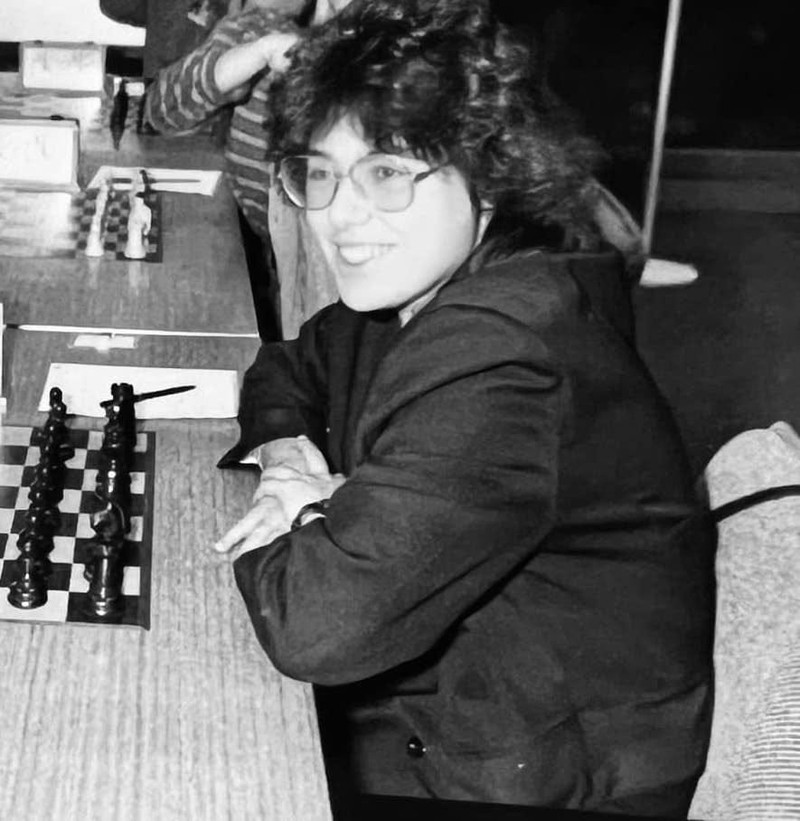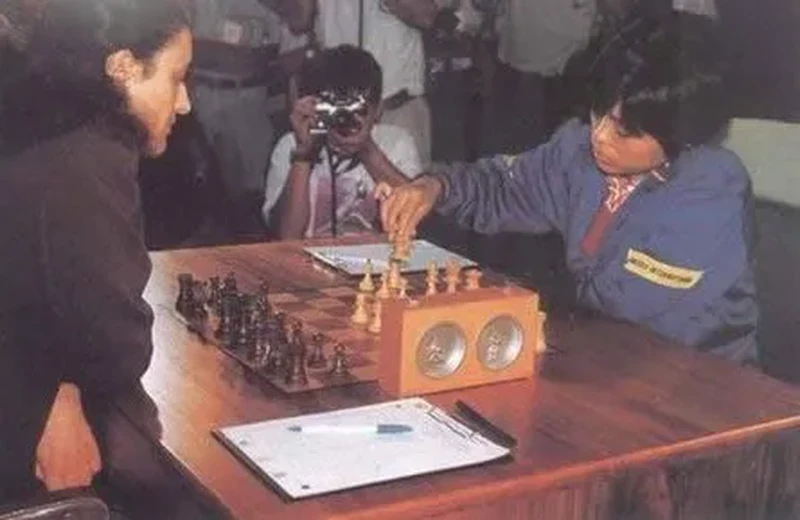
Unknown
Entire History of Women's Chess in Eight Tournaments (Part 2)
The present awaits!Welcome back to the ’90s! We left off at 1989 in Part 1 of the Entire History of Women's Chess in Eight Tournaments after some astounding performances by Vera Menchik, Nona Gaprindashvili, the Polgar-led Hungary national team, and Sofia Polgar in particular. Now it’s on to the present!
No. 5: Pamplona 1991
While Sofia Polgar never achieved the GM title, both of her sisters did. Approaching 1991, both Susan and Judit had long since reached 2500 and were closing in on the title. Susan only needed one more norm.
After making norms in 1988 and 1989, it became apparent Susan wasn’t going to make the last one in 1990. But she still had one more tournament left, a lower-tier super-tournament in Pamplona that began right before New Year’s and split into the next year. In the middle of the event, Susan won her very last game of 1990 against Leonid Yudasin, the world No. 8 on that January’s rating list. That proved to be the deciding game that earned Susan her final GM norm. At age 21, Susan Polgar was a Grandmaster.
Susan was the third woman to become a GM, and the first to do it strictly through the formal norm requirement. Nona had just that norm at Lone Pine. Maia made enough norms, but only after she had already been given the GM title in conjunction with her third World Championship. Susan showed it could be done through just the usual kind of norms too. Both her sister Judit and Pia Cramling followed suit in earning the GM title in the same manner within the next year. A decade later, it finally became a much more regular occurrence and over the last 20 years, a new woman has made it to GM about once or twice a year.

Susan Polgar a month before becoming a GM. Credit: via Susan Polgar.
No. 6: Women’s World Championship 1991
The Soviet reign over the Olympiad had ended in 1988, but Maia Chiburdanidze was still the Women’s World Champion in 1991. In fact, not only had the USSR won all 15 Women’s World Championships dating back to 1950, but all 15 Challengers or runner-ups were also from the USSR.
With the Polgars and Pia Cramling uninterested in the Women’s World Championship at the time, the 1990 Women’s Candidates featured four players from the USSR in its field of eight, including past World Champion Nona Gaprindashvili and Maia’s most recent Challenger Nana Ioseliani. But it was China’s Xie Jun and Yugoslavia’s Alisa Marić, two 20-year-olds and two of the lower seeds at No. 22 and No. 43 in the women’s rankings, who tied for first. This was going to be the first time a non-Soviet would play for the Women’s World Championship since before the Second World War, and Xie Jun claimed the spot in a play-off.
By the time of the match in the Philippines the following October, Xie Jun had closed much of the gap in rating and reached No. 6 in the world, but Maia was still considered the favourite. Maia had a 2-1 lead approaching the halfway point of the 16-game match, but Xie Jun claimed the final three wins of the match to become World Champion. It was the first Women’s World Championship held in Asia, and Xie Jun was the first Women’s World Champion from Asia.
Xie Jun became a celebrity in China and her world title put China at the forefront of women’s chess. Since then, China has had a Soviet-like dominance over the World Championship, claiming 15 of 20 titles, including two more by Xie Jun. Today, China still dominates women’s chess and the center of the women’s chess world has shifted from eastern Europe to Asia as a whole. It all started with Xie Jun’s World Championship in 1991.

Xie Jun vs. Maia Chiburdanidze Women’s World Championship match. Credit: Unknown.
No. 7: Russia vs. Rest of the World 2002
This wasn’t Judit Polgar’s best tournament. It wasn’t her best win or her best game. But it was a game and it was a win, and it was against Garry Kasparov.
Judit had already played a dramatic game against Kasparov in their first encounter back in 1994, but dramatic for the wrong reasons. In that game from Linares, Kasparov violated the touch-move rule to avoid giving up his advantage and ended up winning. Who knows what would have happened had he been penalized? By 2002, Judit had been consistently a top 20 player for the past decade and continued to face Kasparov, still the No. 1 player in the world, a number of times, but never managed more than a draw.
That changed in 2002 when Russia hosted a Russia vs. Rest of the World match in Moscow, a long-awaited third edition after the previous USSR vs. Rest of the World matches way back in 1970 and 1984. The match featured the best players in the world. Judit’s teammates included Anand and Ivanchuk. Kasparov’s teammates included Karpov and Kramnik. Unlike the first two matches, this one was played in rapid and as a Scheveningen. Judit played Kasparov in Round 5 and she won, her only win of the event. The win allowed the Rest of the World to maintain their lead in the match by just that one point and they never relinquished it, something of a surprise to many.
To Judit, it was just another win. A rapid game. But to the rest of the world beyond the match, it was eye-opening. It received a flurry of media coverage. To Kasparov himself, it was eye-opening. He had for a long time made degrading comments asserting that intrinsically no woman was capable of playing at the top level, and yet here Judit was beating him at the top level. After the match, Kasparov invited Judit to a week-long training camp. That training helped her reach her peak of No. 8 in the world and 2735 within a few years, setting the mark for anyone who dares to challenge it.

Judit Polgar beats Garry Kasparov in 2002. Credit: Unknown.
No. 8: Biel 2017
This wasn’t Hou Yifan’s best tournament either. That would have to be the Gibraltar Masters in 2012, where she finished first on tiebreak criteria, beat four 2700s including Judit Polgar, and had a 2872-level performance, all at 17. But she didn’t win. First place wasn’t decided by the tiebreak criteria, but by a tiebreak match she ended up losing. Five years later and she still had not had a major tournament win.
That was until the 2017 Biel Grandmaster super-tournament. A tier below the very top, the ten-player round-robin featured seven top 100 players, including three 2700+ super-GMs in addition to former World Champion Ruslan Ponomariov, former World Championship runner-up Peter Leko, and two-time Candidate Alexander Morozevich.
Hou Yifan had a good start by beating Morozevich with Black. A second big win over top seed David Navara in Round 5 and she was still just half a point back of the leader Etienne Bacrot. Hou Yifan was a full point back of Bacrot when they faced off in Round 7. She had a slight edge for most of the game when suddenly Bacrot made a one-move blunder-and-resign. Hou Yifan had caught the leader and now you could see it was inevitable. She only had to face two of the lower seeds while Bacrot had the two top seeds left and the other co-leaders didn’t have easy pairings either. All Hou Yifan had to do was beat the two 2500s to win the tournament, and she did.
Hou Yifan winning Biel outright was one of the greatest results ever achieved by a woman in chess history. It was perhaps the only outright super-tournament win by anyone other than Judit Polgar, and it was on par or arguably even better than Judit’s best single round-robin outright wins from Madrid in 1994 and the Japfa Classic in 2000. Many hoped this would be the start of a surge for Hou Yifan to finally hit the 2700 mark she had been rather close to, but instead she decided to informally retire less than a year later at just 24. Although that was quite young, she had still spent a full decade at the top of women’s chess and the latter half of that span regularly competing in some of the best super tournaments in the world. And at one of them she walked away the champion.

Hou Yifan wins Biel 2017 ahead of Etienne Bacrot and Harikrishna. Credit: Biel International Chess Festival.
Vera to Nona and the Polgars to China certainly doesn’t cover all of women’s chess history, but if there’s any tournament you need to tell your friends about, there’s a good chance these shining performances are where to start.
As for women’s chess history, these eight tournaments are also just the start. You never know when the next chess player will author a performance that belongs on this prestigious list.
For daily coverage of women's chess, follow Women's Chess Coverage on Twitter. For more posts, check out Women's Chess Coverage on Substack, where you'll be able to catch every post before it goes up on lichess, plus extra posts and related content!


